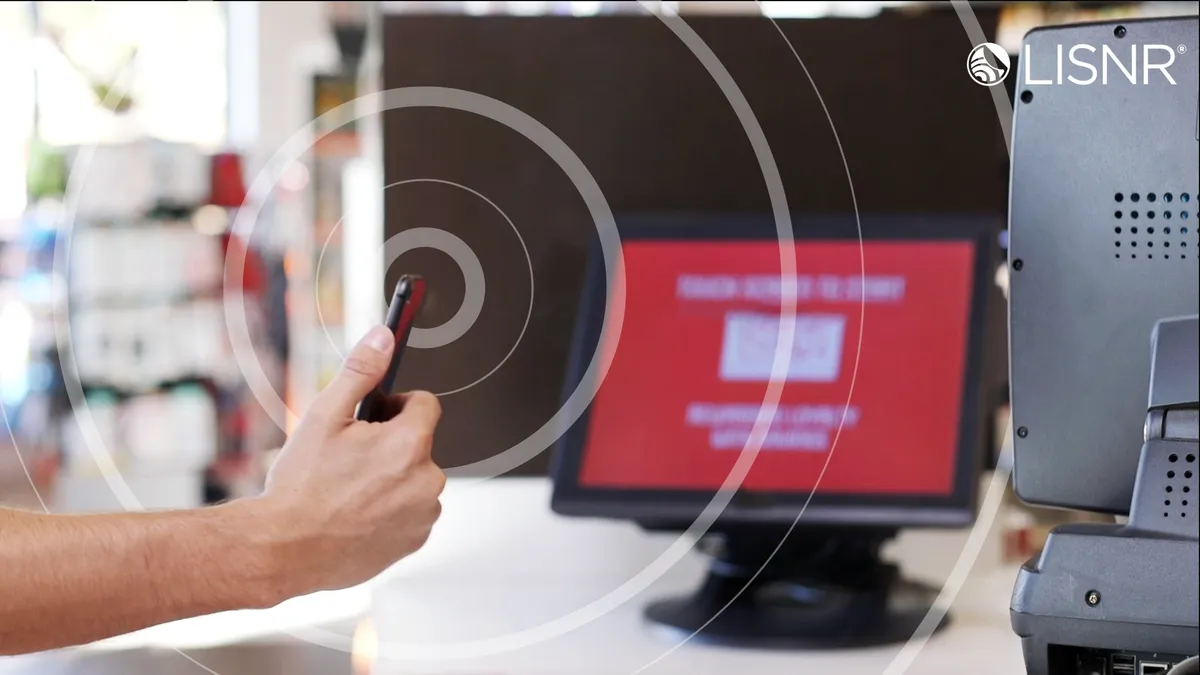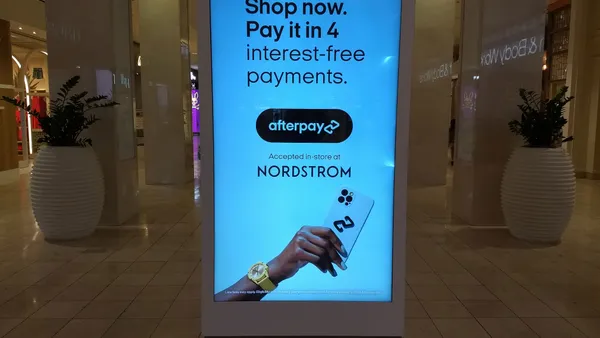Dive Brief:
-
LISNR, a Visa-backed tech startup that uses ultrasound technology for mobile authentication and payments, has partnered with Shuttl, an office commute service provider in Southeast Asia.
-
The partnership will allow customers to authenticate payments from a larger distance, compared to traditional NFC and QR codes.
-
LISNR experienced a near 300% increase in transaction volume quarter over quarter, as contactless payments picked up pace during the pandemic. The company is looking to raise additional capital to lean into its growth.
Dive Insight:
LISNR uses ultrasound technology as a mobile authentication and mobile payments solution. The Cincinnati-based company's ultrasound-based authentication technology can verify transactions from a few inches to nearly six feet apart, unlike NFC and QR codes where customers have to be within a few inches distance from point of sale (POS).
Backed by payment giant Visa, LISNR has raised $40 million in Series C rounds since its inception in 2012. With the rise of contactless payments, LISNR is looking to raise additional capital to fund its growth in the payments authentication landscape, LISNR's CEO Eric Allen told Payments Dive.
"I think it's just the market demand asking for it," Allen said. "We are well-positioned to do everything that QR codes and NFCs can do today and contactless payment experiences have grown significantly in the past 12 months."
With the Shuttl launch announced this month, LISNR's technology will be used on India's largest office commuter service to keep drivers and riders safe in the pandemic era and maintain a quick onboarding process even during spikes in usage.
The platform leverages mobile phone speakers to communicate with each other through inaudible sound waves between 20hz to 20,000hz. LISNR's technology directly competes with QR code and NFC-based payments, which might require specialized hardware for working.
"LISNR's ultrasonic technology offers significantly more flexibility, compatibility, and universal use," Allen said. "It's less hardware dependent given its use of everyday speakers and microphones as the communication connectors vs. radio chips."
Contactless payments picked up pace since the start of the pandemic. According to a recent Square study, the share of cashless businesses, which Square defines as "those that are accepting 95% or more of payments via cashless methods," and include "in-person debit, credit, or contactless payments, Square Online payments, or card-not-present payments" more than doubled in the U.S., Australia, Canada, and the UK in 2020, year-over-year. The share of cash transactions decreased from 37.4% in February 2020 to 30.5% in February 2021, while cashless Square businesses jumped from 6.3% to 14% in the same period.
"It's safe to say that payment will be contactless and cloud-based in the future," Allen said. "As this trend grows, the idea of the POS will also move from counter to the cloud."
LISNR works with financial service companies and merchants to enable contactless payment with their payment service provider.
Nearly 11% of all worldwide shoppers use mobile commerce platforms and nearly 2.7 billion people are expected to use mobile wallets in 2022, according to a Payvision research.
"Payment platforms will need to verify the user's location and proximity at a micro level when payments are initiated and completed," Allen said. "Ultrasonic technology as payment verification is significantly more flexible than NFC and better consumer experience than QR codes."
According to Juniper Research, nearly 47% percent of all digital wallet transactions happened through QR codes in 2020. NFC-based payments will also increase as 34% of mobile handsets are set to use contactless payments in 2025, up from 11% in 2020.
Yet, according to a recent McAfee report, rising mobile and QR code-based payments are not as safe as they might seem. QR codes provide scammers with a new avenue for disguising themselves as legitimate businesses and spreading malicious links.
"McAfee predicts that hackers will find opportunities to use social engineering to gain access to our personal data in a single scan," the report stated.
LISNR's technology requires less hardware integration than NFCs and is also more secure than QR-based payments while saving merchants costs, Allen said.
The company is also working on designing communication networks between two devices more secure and increasing the range of its communication networks, he said.
#BBD0E0 »












